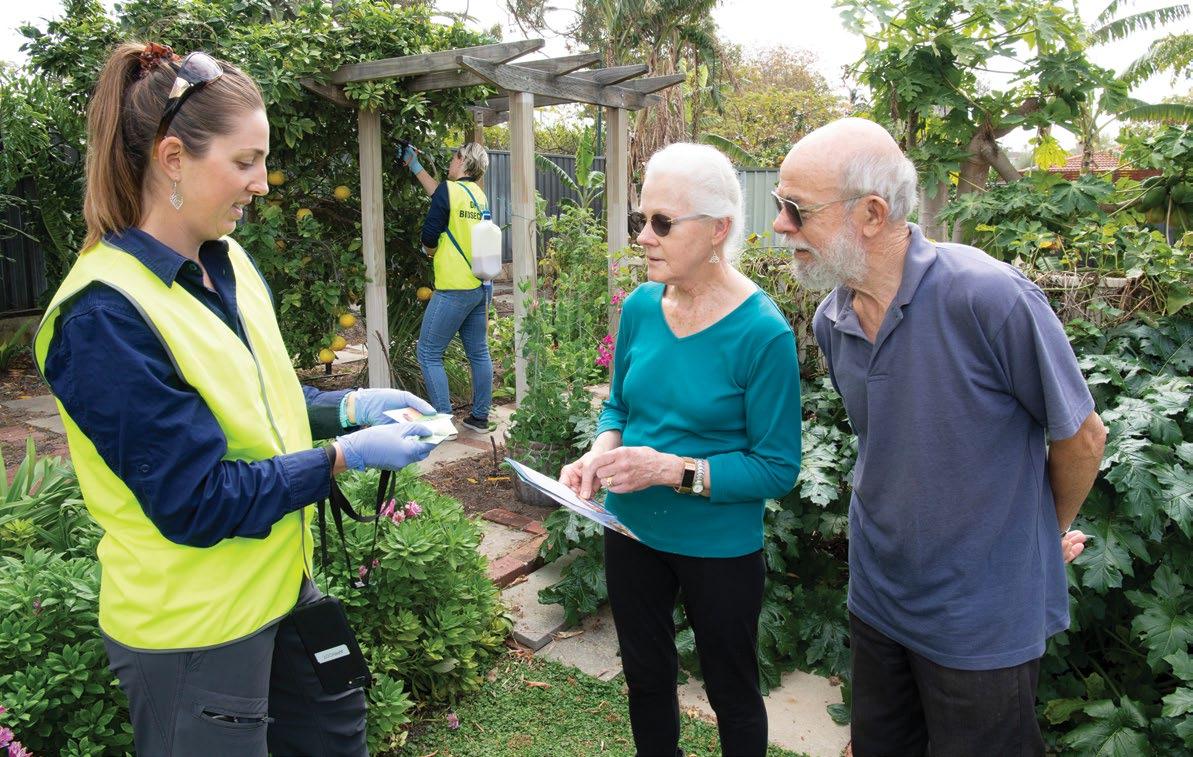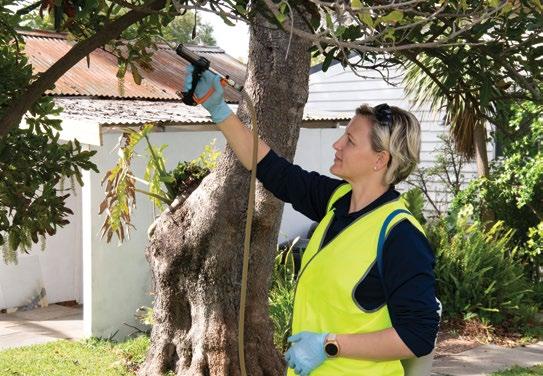
4 minute read
Queensland fruit fly response
DPIRD’s Queensland fruit
fly responsetracking well
Advertisement
The Queensland fruit fly (Qfly) eradication program in Perth’s western suburbs is tracking well with no Qfly found for more than two months.
The Qfly outbreak was declared by the Department of Primary Industries and Regional Development (DPIRD) in late March. Qfly response personnel have visited more than 13,000 individual properties and identified over 250,000 Qfly host plants. The eradication program recently saw its response personnel conduct their 120,000th Qfly property inspection. The largest outbreak since WA’s first Qfly incursion in 1989, Qfly has been eradicated in Perth seven times since 1989, most recently in Como and Fremantle in 2018. Impact to economy WA’s commercial fruit and vegetable industries are valued at approximately It would also make it more difficult for gardeners to grow fruiting plants in their gardens. $1.083 billion annually. What has been happening with It is vital for WA’s horticultural the response lately? industries, and also for home gardeners In mid-September, DPIRD established a growing Qfly host plants, that DPIRD Forward Command Post at Claremont eradicates Qfly. Showground, which lies within the WA’s Area Freedom from Qfly, which underpins market access for a range of produce is essential to ensure produce can be exported without treatment or other protocols being followed. A DPIRD cost benefit analysis has shown that loss of freedom from Qfly will cost WA $38 million per year. A change in Qfly pest free status would impact the international export of avocados, table grapes and strawberries to markets such as Japan that rely on WA’s freedom from Qfly. The suspension of domestic or international trade, and any increased Quarantine Area (QA). This has allowed the Qfly operations team to more efficiently conduct the intensive Qfly baiting and surveillance program, known as the Spring baiting program. This move provides the Qfly operations team with adequate space to complete important operational activities such as bait mixing whilst increasing office space and car parking. These facilities have also provided significant advantages in reducing Occupational Health and Safety risks. No Queensland fruit fly found for more than two months. phytosanitary treatment costs, would The operation is a priority for DPIRD place an additional burden on industry. with significant resources allocated to the incident.
3 QFLY response personnel viewing the latest data from the field. Approximately 350 personnel have been employed, including nine Royal Agricultural Society of WA staff who have been unable to work on activities related to the Perth Royal Show. Field work has been conducted by up to 124 teams requiring 153 vehicles, 163 smart phones for data entry, personal protective equipment, baiting equipment, sample kits and paperwork. Field teams commence at 6.45am daily, with the last of the field teams finishing at 5.30pm. Several teams have been working on Saturdays to schedule visits where residents are unavailable during the week.

3 JAMES Everett and Jocelyn Everett, of Dalkeith, with Qfly surveillance officers Michelle Chami and Adeline Blin.
With visits being conducted weekly, Qfly personnel and their vehicles have become a common sight around the QA. In addition to baiting, an essential part of eradicating Qfly continues to be educating residents about the movement, management and disposal of host fruit. Residents are asked to comply with QA requirements which include not taking host fruit outside the QA unless it has been cooked, frozen for 24 hours or solarised. Residents are also encouraged to practice good garden hygiene by picking all ripe or ripening host fruit from trees and plants and picking up any fallen host fruit every three days and treating it before disposal. The results of the operation are tangible with no Qfly detected since 10 August, 2020 and no larval detections since 15 September.
Next steps
The final stage of the eradication program is to release Sterile Insect Technique (SIT) Qfly in the QA. Releasing these sterile Qfly ensures the eradication of any remaining Qfly in the QA as the sterile Qfly will mate with any remaining Qfly, resulting in no offspring. Sterile Qfly will be sourced as pupae from the SITPlus factory at Port Augusta, South Australia.

3 QFLY surveillance officer Michelle Chami applying a spot of bait to a tree.
These pupae will be reared to adulthood in WA, following the emergence the sterile adults will be released throughout the QA using a purpose built release machine. Release of sterile Qfly is planned to occur from late 2020 to early 20211 .
MORE INFORMATION
For updates on DPIRD’s Qfly response please visit www.agric.wa.gov.au/qflyupdate
1 Current 6 November, 2020.
Department of
Primary Industries and Regional Development
3 MORNING briefing at the Forward Command Post, Claremont showground.











